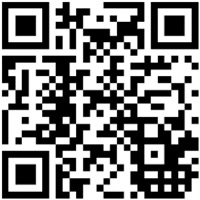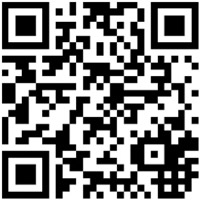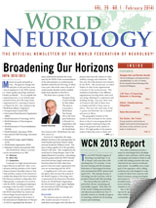By W. Struhal and Prof. P. Engel
 Young individuals born between 1981 and 1999 belong to Generation Y (Gen-Y). They are also called Digital Natives. In contrast to their parents belonging to the Baby Boomer generation, Gen-Y individuals are comfortable with the World Wide Web. They expect to find all information online, they rapidly adopt new online services and appreciate interacting digitally. Residents and young neurologists are mainly now recruiting from this new generation. Gen-Y neurologists do show fundamental different knowledge acquisition strategies mainly focused on online resources, challenging not only online services, but also training and teaching1,2.
Young individuals born between 1981 and 1999 belong to Generation Y (Gen-Y). They are also called Digital Natives. In contrast to their parents belonging to the Baby Boomer generation, Gen-Y individuals are comfortable with the World Wide Web. They expect to find all information online, they rapidly adopt new online services and appreciate interacting digitally. Residents and young neurologists are mainly now recruiting from this new generation. Gen-Y neurologists do show fundamental different knowledge acquisition strategies mainly focused on online resources, challenging not only online services, but also training and teaching1,2.
WFN has a fundamental interest in attracting these young neurologists to its organization and to including them in WFN’s activities and projects. In addition, WFN aims to support and foster active contributions of Gen-Y neurologists to the biannual world congresses of neurology (WCN).
To achieve this aim, the WFN Website Committee has extended its online footprint from website alone to social media. There are distinct differences between the online service of a website and social media. A website provides one-directional information like other mass media (one sender-many recipients). In contrast, social media offers the opportunity to discuss a topic, add personal opinions or simply show that the topic is appealing by “liking” it (many senders-many recipients). While Baby Boomers appreciate the mass media approach of a website, Gen-Y’ers are used to social media and expect to have the chance to interact with information online rather than simply consume it. Another difference between websites and social media is that with websites users become aware of news published only if they revisit the website (the user comes to website content). On global organizations, users usually visit the website only infrequently and rather search for specific content. Social media, in contrast, broadcasts news onto the social media of users, which for Gen-Y, are often smartphone based. This means that WFN has the chance to attract individuals to WFN content even when these individuals do not intend to visit the WFN’s website (website content comes to the user).
The Website Committee has decided to offer three different social media services via Facebook, LinkedIn and Twitter, under responsibility of Walter Struhal (@walterstruhal).

Facebook is the largest social media site with 1,110 million active users worldwide (by March 2013). It allows users to present a personal profile, to follow friends and organizations, exchange and “like” messages. Facebook is used by many individuals for personal networking. WFN has started a Facebook page, which currently has 1,456 followers (Dec. 14).
In preparation for the 2013 World Congress, WCN initiated a Facebook photo contest. The contest winner Daehyun Kim proposed to his girlfriend while he was collecting his prize — WFN wishes the couple all the best for a wonderful future together!
LinkedIn has 259 million active users worldwide (by June 2013) and offers similar services as Facebook. However, LinkedIn is aimed at individuals in professional occupations and is mainly used for professional networking. Users do present their affiliations and skills and interconnect with other professionals. Interconnecting is more restricted in LinkedIn, which tries to prevent interconnections between people who don’t know each other in real life. WFN has started a LinkedIn group, which currently has 864 members (December 14).
Twitter has 200 million active users worldwide (by February 2013) and has a different approach to social networking. In fact, it is rather a micro-blogging service, which allows users to write short messages with up to 140 characters. All messages are online and open to the public to read, even for non-members of the service. WFN currently has 346 registered followers (December 14). Interesting content on WFN’s social media services as well as lively discussions lead to a growing fan audience. We invite you and your residents to follow our social media footage.
Follow and interact with WFN on
- facebook (www.facebook.com/wfneurology)
- twitter (www.twitter.com/wfneurology)
- LinkedIn: World Federation of Neurology LinkedIn group (linkedin.com)
References
- Elkind MSV. Teaching the next generation of neurologists. Neurology 2009; 72(7):657-663.
- Struhal W, Falup-Pecurariu C, Sztriha LK, Grisold W, Sellner J. European Association of Young Neurologists and Trainees: position paper on teaching courses for Generation Y. Eur Neurol 2011; 65(6):352-354.

